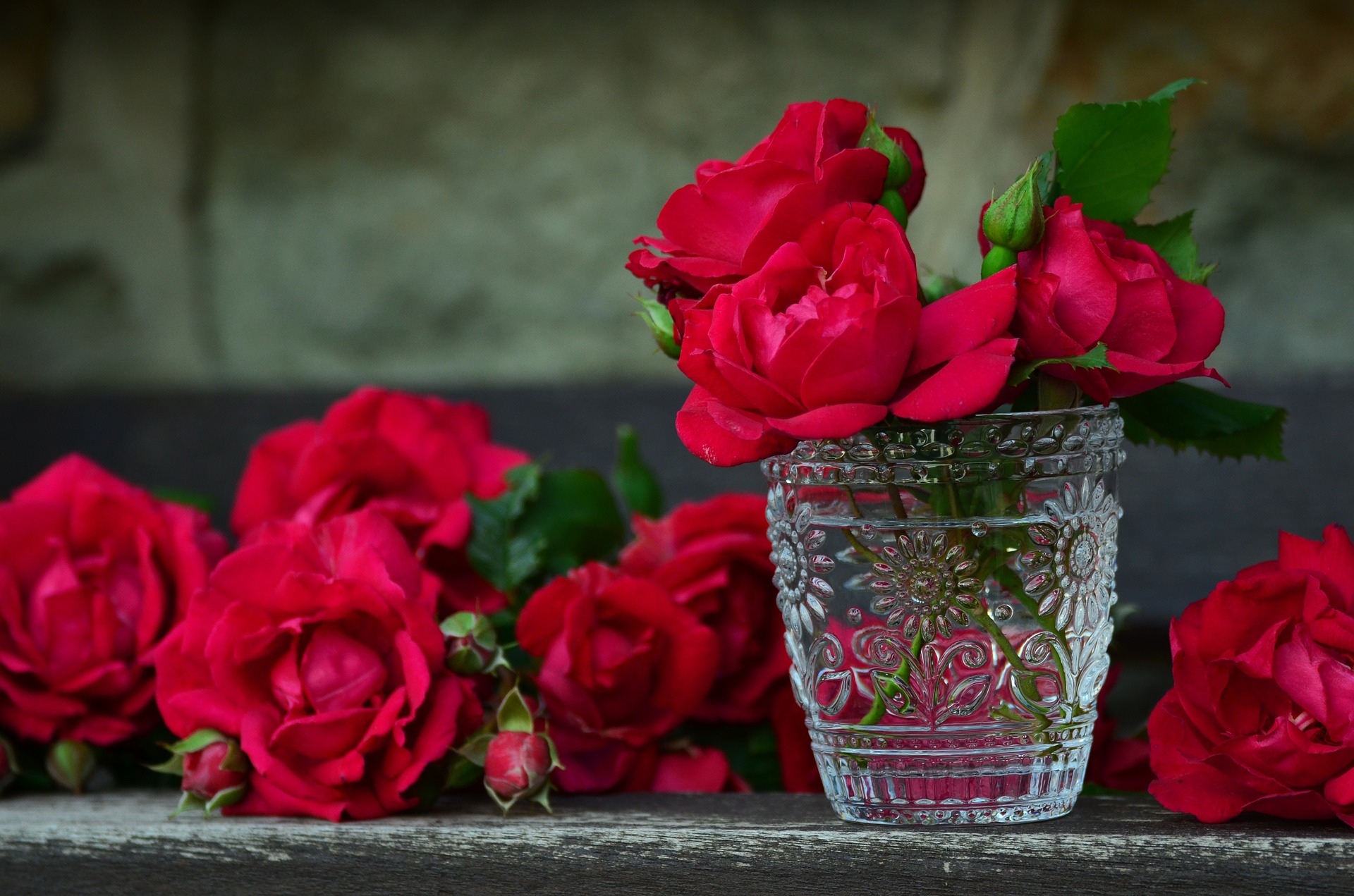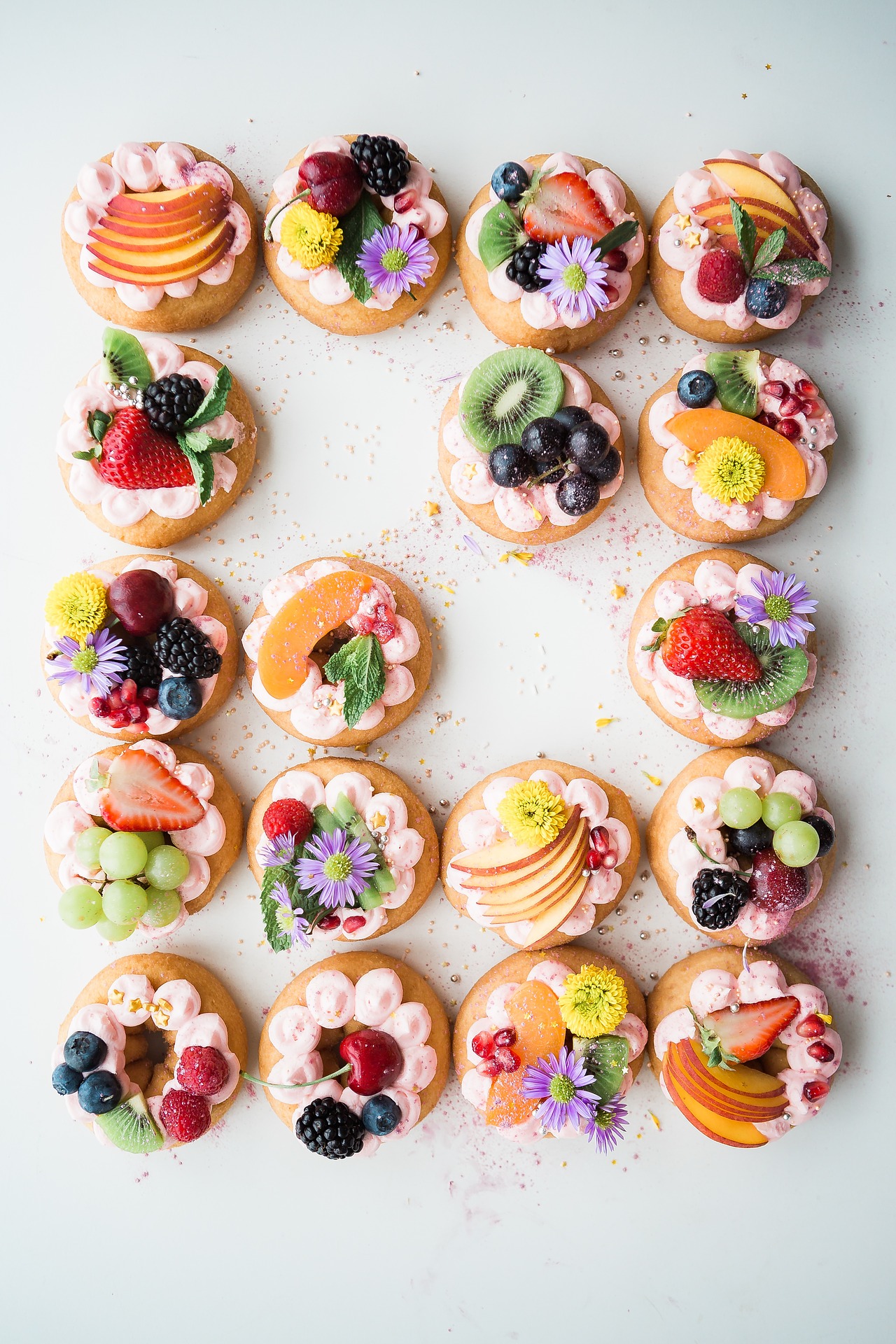FOOD FACTS: Edible Flowers
I took this photo at the Spring 2019 Menu Tasting at Lazy Dog Restaurants’ Roseville location. This is a wonderful Cyprus Grove goat cheese topped with pepper jelly and petals!
Dear Foodie Fam,
Spring is Here!
Here’s how to eat edible flowers!
Please conduct more research on any of these flowers you intend to consume!
How to Acquire Edible Flowers
Be extremely sure you have identified the flower correctly and there were no chemicals or pesticide used in growing the flower.
Be sure your flower smells and looks good. If it’s healthy, it will taste better.
Cut the flower in a way that ensures future growth from the same plant- above the new leaf nodule. OR (and this is the best way to avoid chemicals) buy them from the produce aisle at your local market or straight from a vendor at a farmer’s market.
Remove insects and dirt by gently shaking your flowers.
Clean your flowers by gently washing them in a large bowl of cold water.
Drain or pat flowers dry.
Let the flowers air-dry on a paper towel-lined tray.
Use the flowers immediately. If you can’t use them immediately, line an airtight container with damp paper towels and place the flowers in there. They will last up to one week.
Use flowers sparingly due to the digestive complications that can occur with a large consumption rate.
-
Some Edible Fowers
SOURCE: Pezibear at Pixabay
1
CARNATIONS
TASTE: Sweet. Slightly spicy.
APPEARANCE: Up to 3” diameter. Many colors.
EAT: Petals, only.
FOOD: Wine, candy, cake. (It’s one of secret ingredients used in making Chartreuse.)
BENEFITS: Used to treat: stress, inflammation, skin conditions, nausea.
SOURCE: pixel2013 at Pixabay
2
DANDELIONS
TASTE: Sweet and honey-like when young. Bitter when old.
APPEARANCE: Small (up to 1.5” diameter). Bright yellow .
EAT: Raw. Steamed. Entirely (roots, stems and leaves.) Buds are tastier than the flowers.
FOOD: Salad, breaded, fried. Jelly, wine, tea, stews, casseroles.
BENEFITS: Used to treat: liver disease, liver pain, abdominal pain, cancer, anxiety. Promotes Relaxation. Aphrodisiac.
SOURCE: Websi at Pixabay
3
HIBISCUS
TASTE: Very sweet. Cranberry-like. Floral.
APPEARANCE: Large (6” diameter), ornate, tropical. Many colors.
EAT: Eat the part under the flower.
FOOD: Popularly used in Mexico. Teas, syrups or desserts.
BENEFITS: Antioxidants. Used to treat: high blood pressure and high blood fat levels, cancer, bacteria problems. May boost: liver health, weight loss.
SOURCE: jill111 at Pixabay
4
LAVENDER
TASTE: Faintly citrusy. Sweet, spicy, perfumed.
APPEARANCE: Small, clustered, violet colored.
EAT: Grind culinary lavender or strain it out of a liquid. Very strong. Use sparingly.
FOOD: Cocktails, teas, desserts, baked goods, infused syrups, liqueurs, teas, dry spice rubs, herb mixtures. Pairs well with sweet and savory.
BENEFITS: Used to treat: anxiety, fungal infections, wound healing, hair loss, premenstrual emotional symptoms. Promotes Relaxation.
SOURCE: Peggychoucair at pixabay
5
MARIGOLDS
*(toxic to animals but not humans)
TASTE: Peppery, tangy, spicy. Faint citrus flavor. Slightly bitter. Similar to saffron.
APPEARANCE: Golden-Orange. Pom-pom like.
EAT: Petals, only.
FOOD: At one time, used in butter and cheeses. Try it in a salad.
BENEFITS: Used to treat: inflammation, hemorrhoid pain, cramps, spasms, skin conditions, digestive problems, eye infection, genital infection. Boosts immune system. Naturally repels bugs. Promotes Relaxation.
SOURCE: klausPeter at pixabay
6
PANSIES
TASTE: Varies. Generally: Grassy. Minty. Perfumey.
APPEARANCE: Many colors.
EAT: Stamen, pistil, and sepals are all edible. Raw.
FOOD: Garnish on lots of things.
BENEFITS: Used to treat: Skin conditions, respiratory conditions, hHigh blood pressure, heart pain, bladder infections.
SOURCE: congerdesign at pixabay
7
ROSES
TASTE: Varies (darker means stronger flavor). Fruity or spicy undertones. Perfumey. Similar to strawberries or green apples.
APPEARANCE: Many sizes and colors.
EAT: Raw or dried. Petals, only.
FOOD: Salads. Granola. Tea. Muddled beverages. Jams. Jellies. Soup.
BENEFITS: Used to treat: anxiety, stomach disorders, diarrhea, constipation, gallbladder ailments, urinary tract and kidney disorders, fluid retention, gout, sciatica, diabetes, chest ailments, fever, high cholesterol, high blood pressure, weight loss, increasing blood and urine flow. Promotes Relaxation.
SOURCE: Floranella
8
VIOLETS
TASTE: Sweet and floral
APPEARANCE: Pastel colors. Vibrant colors.
EAT: Leaves and flowers.
FOOD: dessert or freeze into ice cubes for decorative drinking.
BENEFITS: Used to treat: mental strain, emotional strain and emotional disorders, menopause symptoms, digestive tract complaints, respiratory tract conditions, minor pain. Used directly on skin disorders.
SOURCE: StockSnap at Pixabay
Other Edible Flowers
Chamomile
Chive Blossoms
Chrysanthemum
Fuchsia
Gladiolus
Jasmine
Johnny-Jump-Ups
Lilac
Lemon Verbena
Nasturtiums
Primrose
Queen Anne’s Lace
Sage Flowers
Snap Dragons
Squash Blossoms
Sunflowers
Tulip Petals
Zucchini Blossoms
Infographics from ProFlowers.com
Sources
Web MD
















